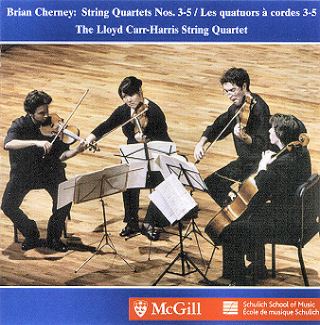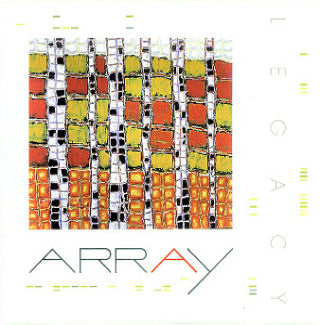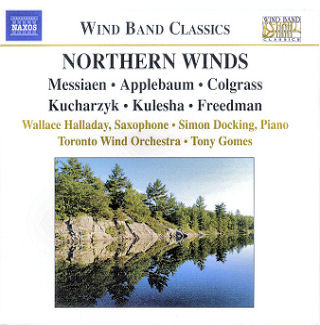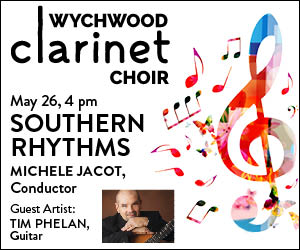| When I heard that the Molinari Quartet will premiere Brian Cherney’s String Quartet No.6 in Montreal this May I was surprised to learn that he had composed so many. McGill Records recently released a CD featuring the Lloyd Carr-Harris Quartet in Cherney’s String Quartets Nos. 3-5. These works span a decade and a half beginning in 1985 and are an excellent representation of the mature work of one of Canada’s most uncompromising composers. Much of Cherney’s work is a response to trauma, both personal loss and universal tribulations, in particular the Holocaust. The Third Quartet was written in memory of the composer’s father who died in the year preceding its composition and it draws on an earlier string trio, written to commemorate his father’s 60th birthday, for some of its material. Beginning in near silence as its predecessor ended, Cherney’s Fourth seems a continuation of the Third. Written in 1994, this time the inspiration is the 50th anniversary of the end of the Second World War. The program notes mention numerical sequences at play in the fabric of the composition which hint at the influence of Elliott Carter on Cherney’s approach. This quartet too ends in the “stillness” which is a frequent aspect of this composer’s work. Although the Fifth quartet begins in quiet, almost immediately we hear cries of anguish. This work, commissioned by the Strings of the Future festival in Ottawa in 2000, does not have any stated programmatic inspiration. In form (and substance) I would liken it to the work of Polish master Witold Lutoslawski with its Episode-Interlude-Episode-Interlude-Episode structure and we hear references to Bartok’s quartets, but in an assimilative, rather than a derivative way. Cherney has absorbed the most important works of the 20th century and found his own way to carry them forward. |  |
 |
Back in 2006, their 35th anniversary season, Toronto’s second oldest contemporary music organization Array, embarked on a recording project called Legacy (Artifact Music ART 038) to document highlights of its remarkable history. Founding members (Alex Pauk and Marjan Mozetich) and former and current artistic directors (Doug Perry, Henry Kucharzyk, Linda C. Smith, Allison Cameron and Bob Stevenson) curated this 2 CD set which features a broad spectrum of the music written for Array over the past three decades. In May 2007 the Legacy concert took place at Glenn Gould Studio with Array members Bob Stevenson, Michael White, Stephen Clarke, Rebecca van der Post, Peter Pavlovsky, Blair Mackay and Rick Sacks joined by guest artists Doug Perry and Paul Widner (both former Array members), Dianne Aitken, and Rachel Thomas thereby adding viola, cello, flute and trombone to the current instrumentation of the ensemble - clarinet(s), trumpet, piano, violin, bass and 2 percussion - to facilitate performance of works written for previous incarnations of the group. Highlights for me include the late Michael J. Baker’s La vie de Bohème for multiple clarinets, John Rea’s …wings of silence… for ensemble and tape, Marjan Mozetich’s Ice for flute, trombone, piano and viola and Stevenson’s Trace, but certainly others may find Pauk’s Magaru, John Abram’s Steiner Shimmy, Kevin Volans’ Into Darkness or Kucharzyk’s arrangement of Claude Vivier’s classic Pulau Dewata more compelling. While in recent times Arraymusic has reinvented itself as a resource centre for new music rather than exclusively a performance vehicle, this release is a welcome testament to the creative force of the Arraymusic ensemble in its heyday. The packaging is visually attractive, however the program notes are almost impossible to decipher with the director’s message printed in miniscule silver type on a white background and the extensive, though unattributed, program notes in grey on green. Had these been easier to read the Legacy would have been much better served. You can check out Array’s new developments at www.arraymusic.com. |
|
Former Array director Henry Kucharzyk also has a presence on a new Naxos release featuring the Toronto Wind Orchestra under Tony Gomes’ direction. Northern Winds (8.572248) is an eclectic collection of Canadian compositions. The disc opens with a boisterous overture entitled High Spirits by Louis Applebaum. Applebaum wrote hundreds of compositions for a myriad of media, but it is all too rare to hear his music performed these days outside of the fanfares he created for the Stratford Festival which are still in use today. Kudos to the Toronto Wind Orchestra for reminding us of his vibrant contribution to Canadian music. Dream Dancer is an extended work by Michael Colgrass for solo saxophone (the exceptional Wallace Halladay performing) and wind orchestra with a large percussion section. The work moves from haunting slow passages through virtuosic pyrotechnics and sections reminiscent of a variety of exotic cultures with more than a nod to the Indonesian gamelan. Next we are treated to a more abstract work, Kucharzyk’s Some Assembly Required, which with its three contrasting movements gives a somewhat more avant garde approach to the wind orchestra although its rollicking final movement reminds us somewhat of Copland and Bernstein as seen through the eyes of John Adams. Gary Kulesha’s Ensembles inverts the usual fast-slow-fast structure and places its dynamic toccata-like piano and percussion movement in the middle of two slow meditations. The disc is rounded out by Harry Freedman’s Laurentian Moods, a suite of French Canadian Folksongs which unfortunately seem a bit trivial in this context and a centenary tribute to Olivier Messiaen in the form of Oiseaux exotiques featuring pianist Simon Docking. |
 |
We welcome your feedback and invite submissions. CDs and comments should be sent to: The WholeNote, 503 – 720 Bathurst St. Toronto ON M5S 2R4. We also welcome your input via our website, www.thewholenote.com.
David Olds
DISCoveries Editor
discoveries@thewholenote.com



